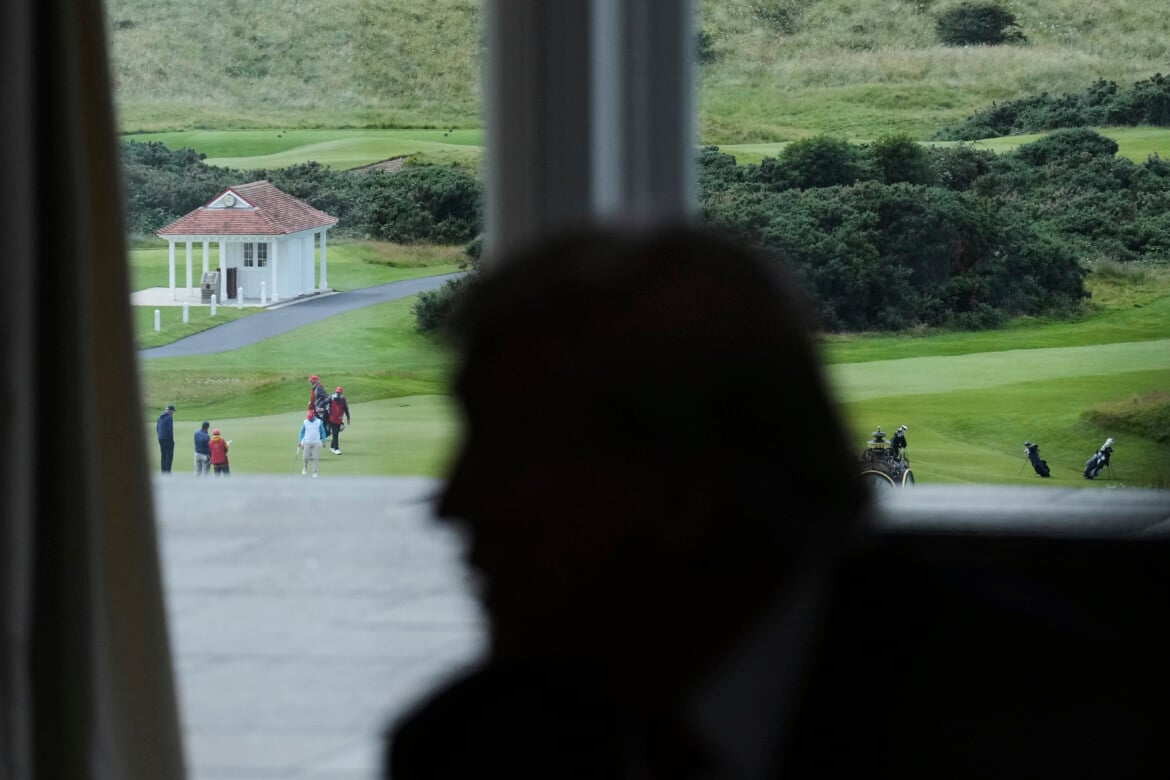Commentary
Brussels at the periphery of Trump’s White House
The EU is committing to paying Trump in a few years an amount equivalent to Italy's GDP: $2.4 trillion. A Banana republic would have obtained better conditions from the Yankee imperialism of yesteryear.

Mar-a-Lago now has a European subsidiary, Trump's Turnberry golf course in Scotland. Here too, the US president receives supplicants and holds press conferences with his supporting actors.
On July 27, European Commission President Ursula von der Leyen was there, smiling as she swallowed the introduction of 15% tariffs on EU exports to the United States. There will be no European countermeasures. On the contrary, the list of European concessions is endless: EU countries will buy energy from the US (all fossil fuels, mainly liquefied natural gas) for $750 billion over three years, increasing annual purchases by 50% (they were $450 billion in 2024); they will buy materials for nuclear power plants; they will make industrial investments worth $600 billion in the United States – mainly in the automotive and pharmaceutical sectors – to produce overseas what is now exported; they will buy American weapons worth hundreds of billions of dollars, as part of the €800 billion European rearmament plans.
All things considered, between tariffs paid to the US Treasury and other transfers, the EU is committing to paying Trump in a few years an amount equivalent to Italy's GDP: $2.4 trillion. A Banana republic would have obtained better conditions from the Yankee imperialism of yesteryear.
Trump's ‘slap in the face' policy has worked beyond all expectations. By attacking allies, preventing them from taking action, pushing them to appreciate that 15% is better than the 30% initially threatened, Trump has obtained a political triumph. All this 'will bring stability', Ursula von der Leyen has declared. A stability that may last only until the next American showdown, which is already looming: on semiconductors, drugs, the privileges of US digital platforms, or the commitment to refinance US public debt or participate in the next American war.
With Brussels, Trump has replicated his success in the standoff with Japan: there too, the agreement included 15% tariffs and a commitment to invest $550 billion in industrial plants in the US. With its neighbors, Trump's plans from August 1st tariffs at 35% for Canada and 30% for Mexico. With tariffs at 10%, post-Brexit UK has obtained a modest preferential treatment, reserved for America’s most loyal ally; on July 28 Prime Minister Kier Starmer paid homage to Trump on his Scottish golf course.
Trump's arm-wrestling strategy with friends and allies has so far been entirely successful. It creates international disorder and ‘systemic chaos’, asserting the right of the strongest. Europe is being turned into a satellite country paying tributes to the emperor. Fear of even worse disorder intimidates the periphery of the empire and reinforces the subordination that Europe, Japan, Canada and Mexico show towards the White House.
But disorder may also spread beyond Trump’s control, with mixed outcomes. Since his arrival in the White House, the dollar has lost 15% against the euro: European products are already costing more for Americans; investing in the US appears more attractive for capital from all over the world; Wall Street – initially frightened by the announcement of tariffs – has kept growing since April 2025 and is now above pre-Trump levels. Confusion is high, uncertainty will grow.
Fortunately, however, the world does not end here. The US' biggest trade deficit is with China, and the two countries are currently negotiating in Stockholm: August 12 will mark the end of the 'truce' in their trade war, which had temporarily set reciprocal tariffs at 30%; Trump’s offensive included tariff raises of up to 145% and Beijing responded blow for blow, not with surrender. Their negotiations go far beyond the trade balance: Chinese exports include essential inputs of US multinationals' value chains - much of the production of iPhones, for example, is carried out in China - and excessive tariffs would disrupt the system. There has long been a US-China clash over digital technologies – rivalry between digital platforms, the race for artificial intelligence and military applications – with a sequence of restrictions and agreements. There is the $750 billion of US public debt held by China. These are just a few of the arm-wrestlings in the slow-motion clash between declining US hegemony and the rising power of China and East Asia in the world economy.
In this context, Europe's unconditional surrender to Trump is tragic, with wide ranging consequences for the future of the EU: tariffs bring to an end the German export-led economic model; fossil energy purchases from the US dismantle the European Green Deal and stop progress on climate; American weapons are turning Europe into a US-controlled military garrison. Without a vision coherent with fundamental European values, without a politics that fights for them, Brussels – and Europe – is turned into the obedient periphery of a crumbling empire.
Originally published at https://ilmanifesto.it/lobbediente-periferia-di-un-impero-in-disfacimento on 2025-07-29
